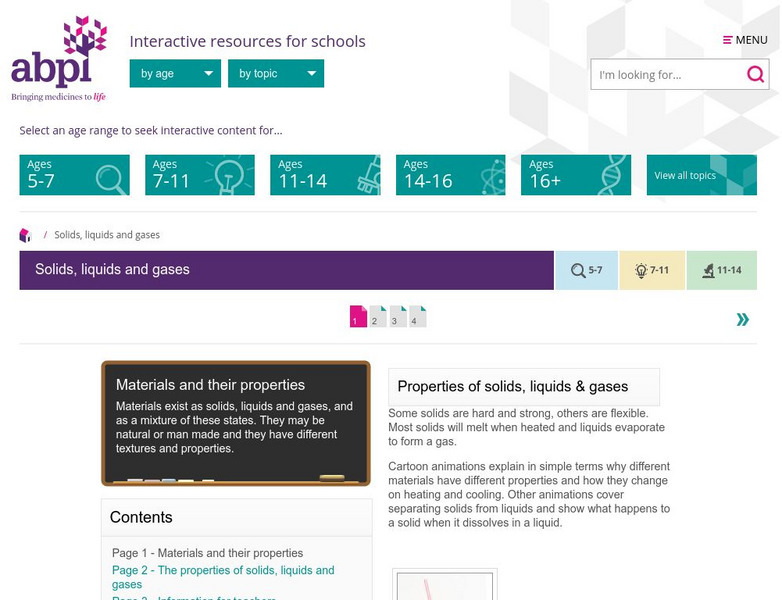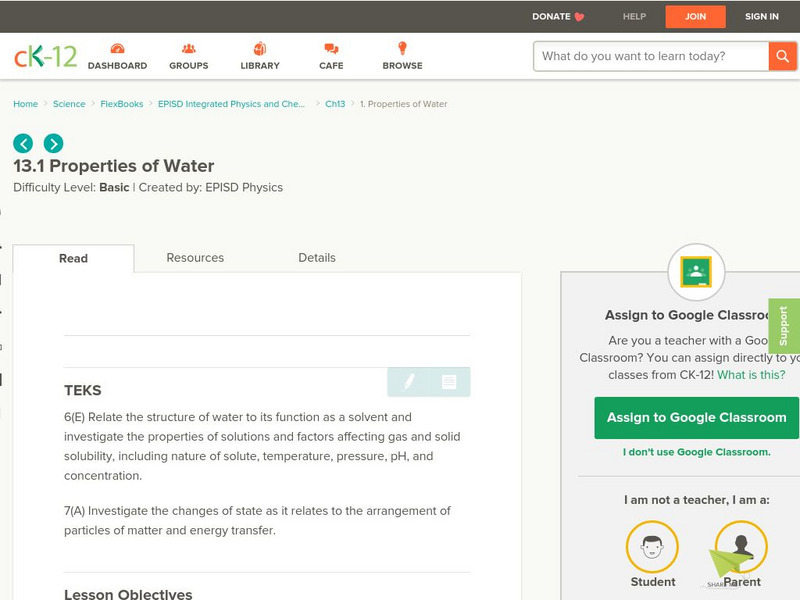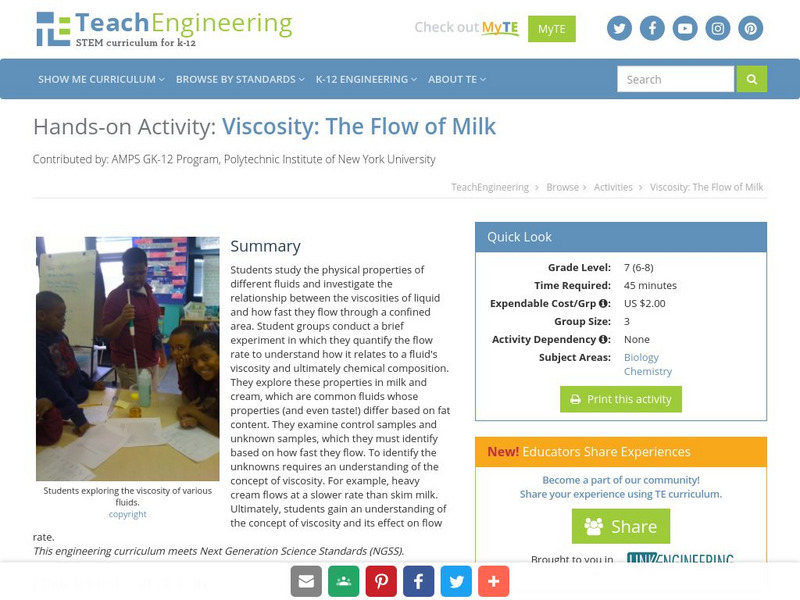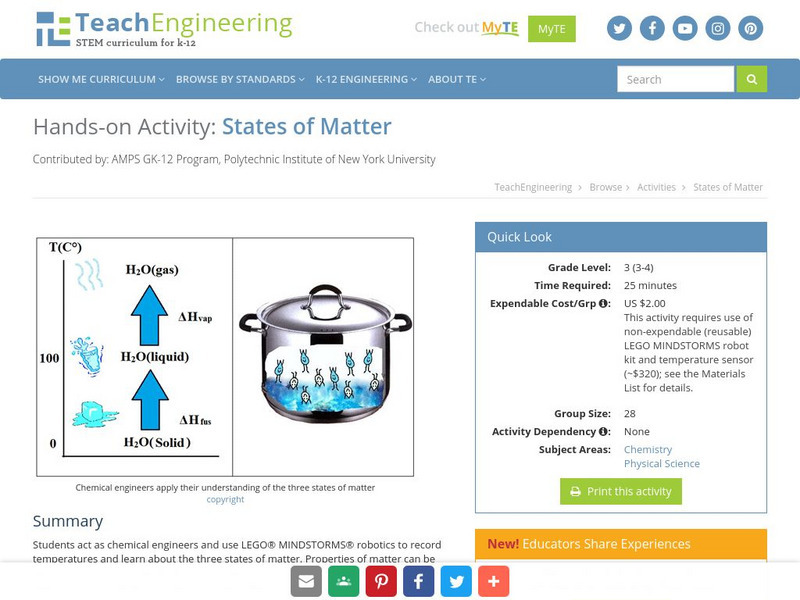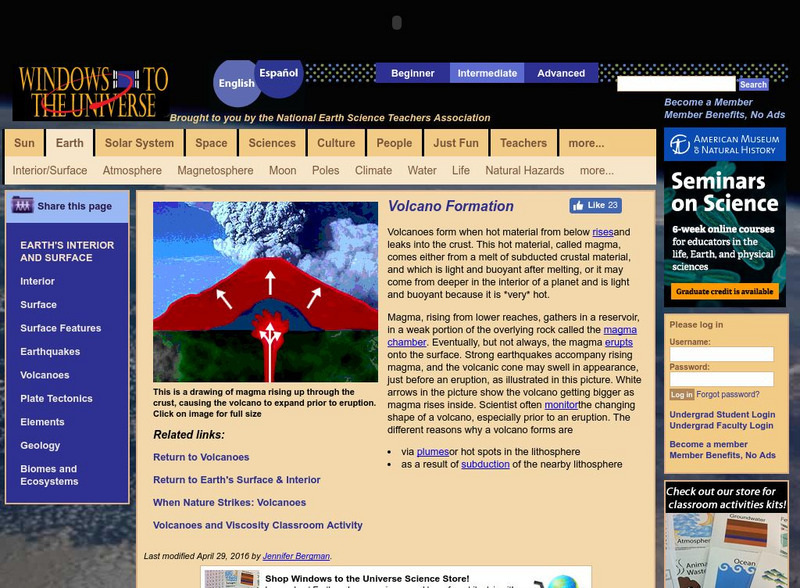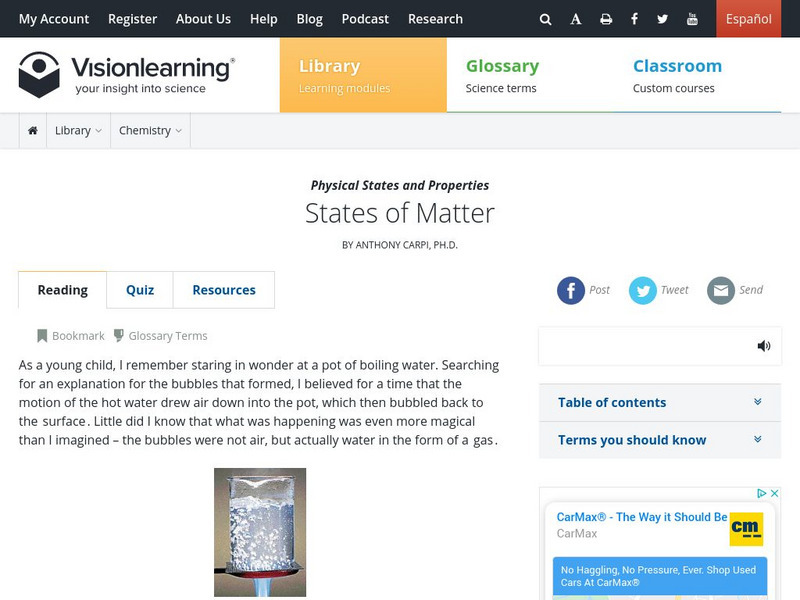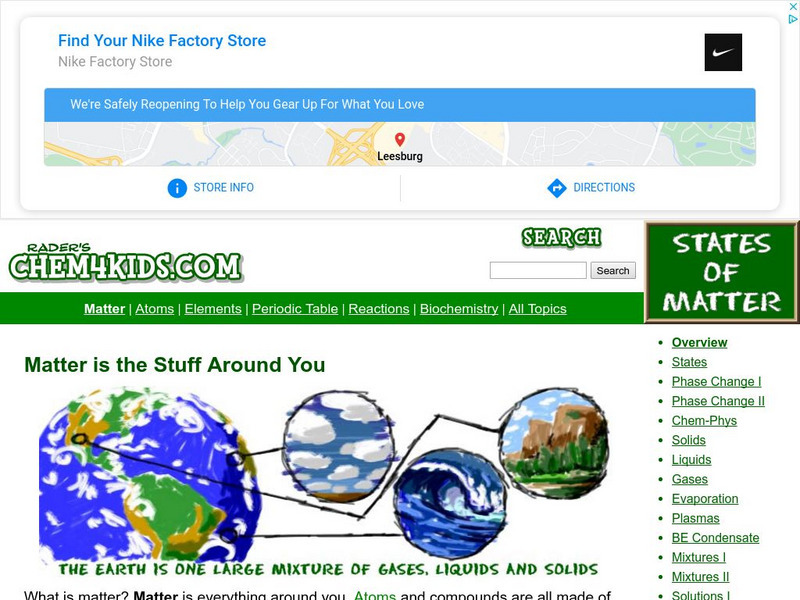Science Buddies
Science Buddies: Race Your Marbles to Discover a Liquid's Viscosity
How do you like your mashed potatoes? Thin and whipped smooth? Or thick and mashed into chunks? Your mouth checks out not just the taste of your food, but its viscosity, or how it flows on your tongue, every time you take a bite. In this...
Science Buddies
Science Buddies: Gel Well: Which Additives Make the Strongest Gelatin?
Gelatin. It's hard to think of another food that is used as frequently on the dinner table as off. You can find it in all sorts of sweet foods, from ice cream, yogurt, and gummy bears, to marshmallows and yellow colorings for sodas. Off...
Science Education Resource Center at Carleton College
Serc: Oobleck: What State's the Matter
A lab activity where students determine the state of matter of the "oobleck". Students will create a lab procedure to investigate the state of matter. Site includes handouts for the activity.
Simon Fraser University
Chem1 Virtual Textbook: States of Matter [Pdf]
Through a series of five related sections, this 24 page pdf file examines a range of topics associated with states of matter including physical interactions between molecular units, bonding within molecular units, molecular units of...
The Association of the British Pharmaceutical Industry
Abpi: Solids, Liquids, and Gases
Students learn about solids, liquids, and gases in this interactive slide show. Animated cartoon characters explain concepts having to do with properties of matter. A self-checking quiz follows the lesson.
BioEd Online
Bio Ed Online: Making a Water Cycle
In this lesson students are required to observe a simple model of the water cycle constructed of sand and ice in a plastic shoe box.
American Chemical Society
Middle School Chemistry: Chapter 5: The Water Molecule and Dissolving
Nine exemplary chemistry lessons about the water molecule and dissolving complete with handouts and animations.
University of Oxford (UK)
University of Oxford: A View From a Distant Universe
An eBook containing information regarding states of matter as it applies to celestial bodies and a universe.
CK-12 Foundation
Ck 12: Properties of Water
[Free Registration/Login may be required to access all resource tools.] In this learning module, students will investigate the chemical and physical properties of the unique and important substance, water.
TeachEngineering
Teach Engineering: Viscosity: The Flow of Milk
Students study the physical properties of different fluids and investigate the relationship between the viscosities of liquid and how fast they flow through a confined area. Student groups conduct a brief experiment in which they...
TeachEngineering
Teach Engineering: States of Matter
Students act as chemical engineers and use LEGO MINDSTORMS NXT robotics to record temperatures and learn about the three states of matter. Properties of matter can be measured in various ways, including volume, mass, density and...
Texas Education Agency
Texas Gateway: Classification of Matter by Composition
The following tutorial provides an explanation of classification of matter by composition.
Texas Education Agency
Texas Gateway: Water
Given scenarios, descriptions, or illustrations, the student will determine the properties of water that affect chemical and biological systems.
National Earth Science Teachers Association
Windows to the Universe: Volcano Formation
Explanation of the factors that result in the formation of volcanoes, some basic but helpful animations and photographs.
Vision Learning
Vision Learning: States of Matter
Did you know the ancient Greeks first identified the three states of matter? Read about how the molecules differ in solids, liquids, gases, and plasma. View photographs and watch how the molecules move in each state. If you're really...
Chem4kids
Chem4 Kids: Liquids
This overview of liquids explores what a liquid is and how matter becomes changes into a liquid.
Chem4kids
Chem4 Kids: Matter
"Matter is everything." So begins this comprehensive website on the physical and chemical properties of matter in its four main states: solids, liquids, gases, and plasmas. The text is large and easy-to-read. Students will enjoy the...
Concord Consortium
Concord Consortium: Stem Resources: States of Matter
Using simulations observe what solids, liquids, and gases look like at the atomic scale. After observing the different states of matter at their atomic level, students will be able to conclude about the forces and attractions that exist...
Frostburg State University
Frostburg State University Chemistry Online: Viscosity and Paste
Describes the changes in viscosity when various amounts of force are applied to a Non-Newtonian liquid. Gives the example of cornstarch paste.
American Chemical Society
Middle School Chemistry: Moving Molecules in a Solid
Students observe and describe, on the molecular level, how heating and cooling affect the motion of molecules in a solid.
Utah Education Network
Uen: Water Magicians
First graders observe water changing states from a solid to a liquid to a gas.
Utah Education Network
Uen: Water, Water Everywhere
Discussion of the various ways we rely on water.
American Chemical Society
Middle School Chemistry: Changing State: Condensation
Students investigate water cycle processes by testing how cooling affects the rate of condensation of water vapor.
PBS
Pbs Learning Media: Mechanical Waves
Learn about mechanical waves, which transfers energy from one place to another through liquids, gases and solids, with this interactive lesson.


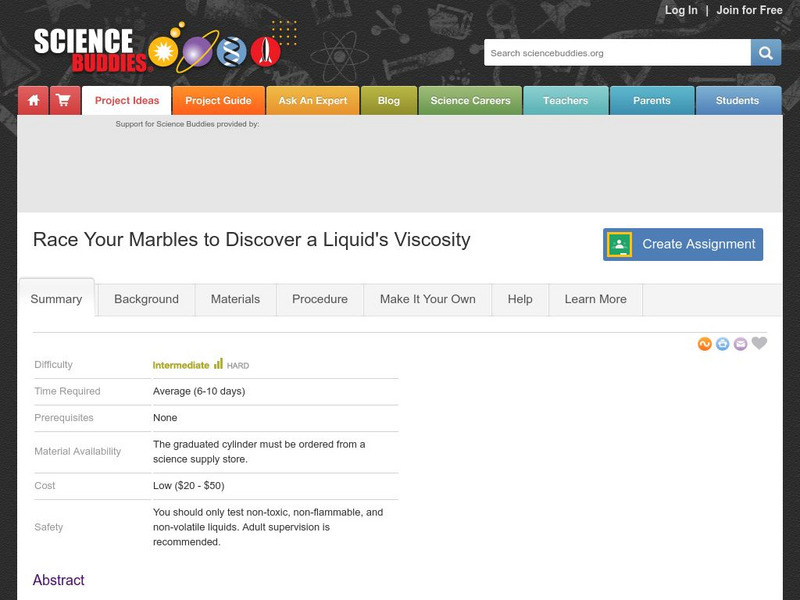

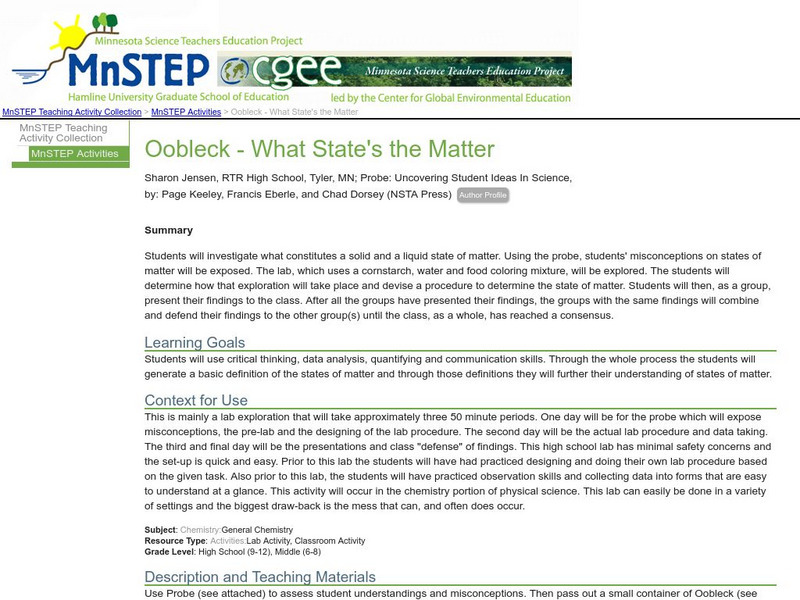
![Chem1 Virtual Textbook: States of Matter [Pdf] Handout Chem1 Virtual Textbook: States of Matter [Pdf] Handout](https://d15y2dacu3jp90.cloudfront.net/images/attachment_defaults/resource/large/FPO-knovation.png)
